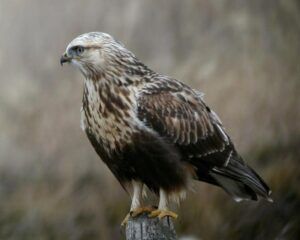I have been writing a monthly column for the Silver State Post and Philipsburg News for a number of years. Recently this column was added to the Bitterroot Star. Most of these 200 articles featured a bird that I was fortunate to photograph. I have birded in 27 countries on 7 continents. Twenty articles featured one of those countries and the pictures of the interesting birds seen there. The remainder of the articles have been on birding skills and techniques such as eBird, binoculars, and window strikes.
This article is about amazing facts and misconceptions about birds that you might not be aware of. Here’s one. Have you ever heard the saying, “she eats like a bird”, meaning she eats very little. The fact is that most birds eat a lot. They have a very high metabolism rate and can lose as much as 10 % of their body weight overnight. During day light hours they spend 75% of their time or more, depending on the species, searching for food and consuming calories. If you do the math and compare what they consume to a human weighing 165 pounds, it means that we would take in 67,000 calories or twenty-six pounds of peanuts a day! The familiar American Robin eats an average of 14 feet of earthworms a day!
Some of what I am sharing comes from personal experience, and some from a fascinating book called, What it’s Like to be a Bird by David Allen Sibley. I would recommend you purchase a copy if you are really into all things bird.
Here’s one that is local in nature. Most, 90 percent or more, of the Rough-legged Hawks that overwinter in Montana are female. The male has a multi-banded tail verses a single band for females so it is easy to distinguish sex in the field. Why are most of these overwinter Rough-legs female? Females weigh more, as much as 10 to 15 % more. The more a bird weighs the less surface area to body mass. That translates to females staying warmer and withstanding colder temperatures. Thus, females of raptor species that winter in Montana from the Arctic Circle and Canada can survive easier at higher latitudes than males. Males must migrate further south to warmer climates to overwinter.
Have you heard the wing beats of waterfowl like Common Goldeneye exploding off the water? How about the winnowing low whistle of the Wilson’s Snipe when they dive from high in the air during courtship displays? The winnowing sound is produced as air rushes through the outer tail feathers. Both of these feather sounds are quite loud as air cuts through their feathers causing them to vibrate. On the other hand, owls are completely quiet in flight. Owl feathers have delicate shaggy fringes on the leading and trailing edges, breaking up air flow causing silent flight which is necessary to catch their rodent prey. Just recently, I spooked a Great Horned Owl at about 10 feet and it left its perch without a sound being made.
Have you noticed that males are more colorful than females in most species when in breeding plumage? Conventional thought is that the bright colors play a role in mate selection by females. More colorful males may have better genes to pass on to offspring improving the chance of her progeny surviving. Females are more muted in color and less visible to predators as they incubate the eggs. Phalaropes are just the opposite, females are larger and more colorful. In phalaropes, once mating and laying of eggs occurs, the female abandons the nest. She might even go look for another male to mate again. The male then incubates the eggs and rears the chicks. This sexual reversal confirms that camouflaged birds incubate eggs, rather than the colorful and showy one, at least in most species.
The placement of the eye on the head of a bird dictates its range of sight. Many birds that have eyes on the side of their heads and can see 360 degrees around and 180 degrees above and below without moving their head. Owls whose eyes face forward have to rotate their head to see a broader field of view, typically achieving 270 degrees of view. This is made possible by more vertebrae in their neck than other bird species. Eagles can see five times the detail that we can and can spot prey from considerable distances.
What’s the fastest animal in the world? The Peregrine Falcon holds the record at 242 miles per hour. Of course, that is achieved in a steep dive after prey, but they can power fly at 60 miles per hour.
A bird’s heart rate is typically more than ten times that of the average human heart producing a very high metabolism rate. Some birds, like hummingbirds and nighthawks slow their heart rate and metabolism at night in a process called torpor. This allows them to rest without starving overnight.
Migration in birds and how they know when and where to fly has always been somewhat of a mystery. Much has been learned through research. We have recently discovered that birds can sense magnetic fields which plays a role in migration. Night migrating birds also orient themselves by observing stars and constellations. Juveniles, females, and males of some species have different migratory paths and times of migration. Spring migration might be up the east coast and fall migration down the west coast, or vice versa depending on the species. Unsuccessful breeders migrate south first, usually in August. This is followed by adults in September, and some juveniles migrate as late as early October. Most song birds migrate at night to avoid predators. Waterfowl migrate in the daytime as well as at night.
There are so many interesting bird facts that I’ll continue this topic in next week’s paper.
Female Rough-legged Hawks winter further north than males

